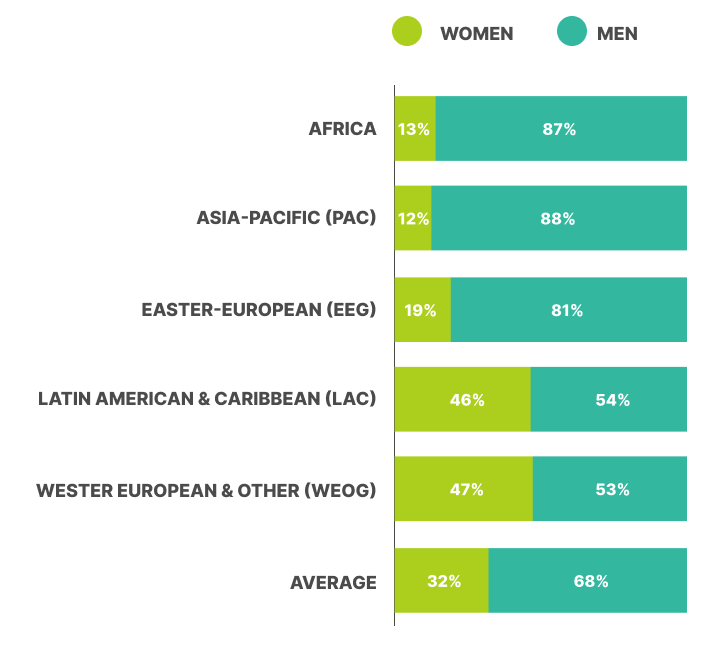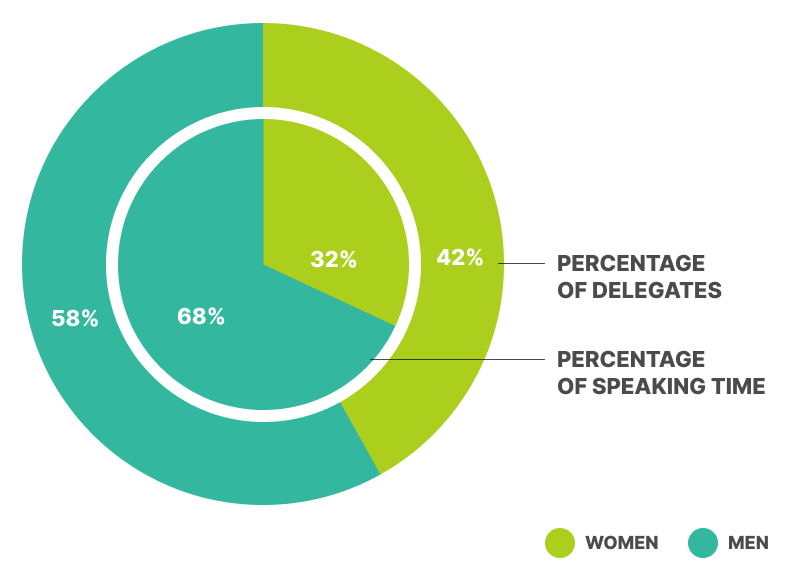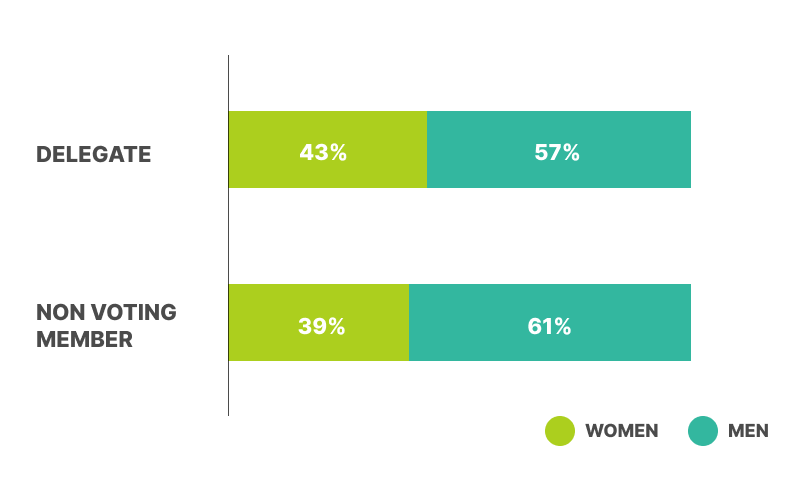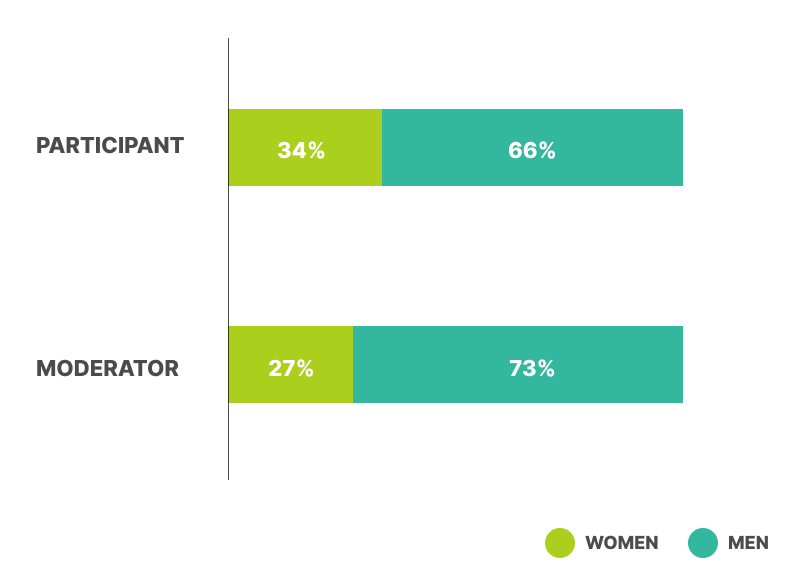The g-app measures representation, participation and influence at events and in decision-making spaces

Using a first-of-its-kind explainable AI algorithm to draw out anonymised insights, producing simple, yet powerful visualizations that display the event’s diversity measuring:
→ Representation – how many attendees, from which UN region, gender, age group, and type of institution (Govt, CSO, Academia, Private sector, etc).
→ Participation – speaking time in sessions.
→ Influence – with which level of authority, for example, using the head of delegation role as a proxy for influence as opposed to Delegate, or Participant and
→ Topics – Analysis of who speaks on which subjects.
Women and youth who registered to the conference in proportion to how much time they spoke at the conference. We find registration (representation) often is 60%M – 40%F, but speaking time (active participation) often defaults to 80%M – 20% F. Gender parity via attendance at a conference does not translate into who is speaking and who has influence.

Keyed to the five United Nations geopolitical regional groups, and the average of the conference.

→ p.ex, Head of Delegation, Delegate, Non-Voting Member.
We consider conference roles as proxies for influence. The 2022 WHO Executive Board had only 9% female Heads of Delegation (a backwards trend). Consequently, in 2022 91% males made decisions for post-pandemic global health, despite the global health workforce being 70% female.

→ p.ex, Chair, Panelist, Delegate, Participant.
These are other proxies for influence. However these are under the control of the conference organizers (as opposed to delegation composition), and therefore present an opportunity to rebalance proxies of influence with expert speakers.

Topics are determined by the conference organizers from their official agenda.
The explainable algorithm created for the g-app uses topic modeling and is also an explainable algorithm which is part of our work on transparency to strengthen democracy.
Who speaks on which topics are of critical importance. Are women speaking as much on gender issues as on cybersecurity or finance? Are youth speaking about labor issues as much as on climate change or education? And on which panels are they speaking, or just on siloed “youth” streams of discussion?

“We expect 10.9 billion people to be born by century’s end. We need their talents, ideas and energies. Young people need more than support, they need a seat at the table”, said UN Secretary General Antonio Guterrez at the 76th General Assembly in September 2021.
Understanding when, where and how youth get to speak in international assemblies and multilateral fora is a critical part of their being at the table.



